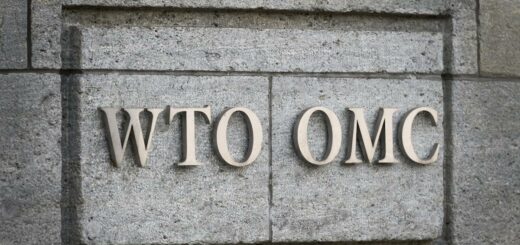National Current Affairs – UPSC/IAS Exams- 11th October 2019
Topic: International Affairs
In News: Turkey has launched a military operation against Kurdish fighters in northeast Syria, attacking the YPG militia positions.
More on the Topic:
- The Syrian Kurdish region, Rojava, is now run by a semi-autonomous Kurdish government. The Kurdish militias, People’s Protection Units (YPG), are guarding the borders.
- The YPG was the dominant player in the U.S.-backed Syrian Democratic Forces (SDF) that destroyed the IS “caliphate”.
- Turkey sees the YPG as an extension of the banned Kurdistan Workers’ Party (PKK).
- [PKK has fought for Kurdish autonomy in Turkey for three decades.]
- Given their ties to militants waging an insurgency inside it, Turkey views Kurdish YPG fighters in northeast Syria as terrorists.
- It sees an empowered YPG and a Kurdish autonomous government across the border as a growing security threat to itself.
Present Scenario:
- The U.S. troops had been fighting in Syria with the Kurds, against the Islamic State.
- The troops recently started to leave the area in an abrupt policy shift by U.S. President Donald Trump.
- Just days after the U.S. troops pulled back, Turkey has launched a military operation against Kurdish fighters in northeast Syria.
- Air strikes and artillery hit the YPG militia positions around the border town of Ras al Ain.
- Turkish President Tayyip Erdogan announced the start of the attack. He said that the aim was to eliminate what he called a “terror corridor” on Turkey’s southern border.
- It has also said that there was no other ambition except to neutralise the threat against Turkish citizens and to liberate the local people.
Global Response:
- Turkey has vowed to push back from its border, members of the Syrian Kurdish militia, the People’s Protection Units (YPG).
- Turkey plans to carve out a buffer between the border and the Rojava, which will be controlled by pro-Turkish Syrian rebels.
- It intends to create the “safe zone” in order to return millions of refugees to Syrian soil.
- Syria had said it was determined to confront any Turkish aggression by all legitimate means.
- Kurdish-led forces have denounced the S. policy shift as a betrayal.
- The Kurdish-led authority in northern Syria declared a state of “general mobilisation” before the looming attack.
- They have given a call to their institutions and people, to head towards the border region with Turkey. People have been asked to fulfil their moral duty and show resistance.
- World powers fear the action could lead to new challenges in Syria’s war and worsen regional turmoil.
- Russia, Syrian President Bashar al-Assad’s strongest foreign ally, urged dialogue between Damascus and Syria’s Kurds. It called for solving issues in northeast Syria including border security.
- Another Assad ally, Iran, urged Turkey to show restraint and avoid military action in northern Syria.
- Amid deepening humanitarian concerns, N. Secretary-General Antonio Guterres urged all parties in northeast Syria to exercise maximum restraint and protect civilians.
What Lies Ahead:
- The Kurds have played a critical role in defeating the Islamic State. So, President Trump’s decision to pull U.S. troops out of north eastern Syria is a clear betrayal of the Kurdish forces.
- Trump could have opted for an orderly exit from Syria with security guarantees from Turkey for the Kurds.
- It is to be noted that only the IS caliphate was destroyed, and not the IS. The remaining IS fighters have retreated to the Iraqi and Syrian deserts waiting for an opportunity to strike back.
- The Turkish incursion into Syria will set back the advances the Kurds have made in Rojava. Besides, it could also weaken the most potent anti-jihadist force on the ground, and throw the whole region into chaos.
Source: Hindu
Topic: Environment and Ecology
In News: The annual Ganges river Dolphin census was undertaken by the World Wide Fund for Nature- India in collaboration with the Uttar Pradesh Forest Department along about 250 km. long riverine stretch of Upper Ganga river basin between Hastinapur Wildlife Sanctuary and Narora Ramsar site.
More on the Topic:
- In 2015 census their count was 22, and since then the number has been stable in the last few years. This year, there is an expected rise in their number.
- The Ganges river dolphin is found in parts of the Ganges-Meghna-Brahmaputra and Karnaphuli-Sangu river systems in India, Nepal, and Bangladesh.
- The Gangetic river dolphin is India’s national aquatic animal and is popularly known as ‘Susu’.
- Pollution, Restrictive Flow of Water, Poaching and Shipping & Dredging the main threats faced by the Susu population.
- IUCN Status: Endangered
- It is listed on CITES Appendix-I
- It is classified under Schedule 1, Wildlife (Protection) Act, 1972
- Vikramshila Gangetic Dolphin Sanctuary (VGDS) in Bihar’s is India’s only sanctuary for its national aquatic animal
Source: The Hindu
Topic: Science and Technology
In News: Pradhan Mantri Innovative Learning Programme ‘DHRUV’, Reaching the Sky is being launched from Indian Space Research Organization.
More on the Topic:
- DHRUV is a 14-day learning programme launched by Ministry of HRD in ISRO HQ in Bengaluru.
- 60 brightest and talented students from Science, Mathematics and Performing Arts have been chosen for the programme.
- It aims to further sharpen innovative imagination, skills and knowledge of the students to bring solutions to socio-economic, political and environmental issues in the country.
- Every student to be called ‘DHRUV TARA’ will be mentored by renowned experts.
Source: Hindu
The WHO India Country Cooperation Strategy 2019–2023
Topic: Health
In News: ‘The WHO India Country Cooperation Strategy 2019–2023: A Time of Transition’ has been launched.
More on the Topic:
- The India CCS is one of the first that fully aligns itself with the newly adopted WHO 13th General Programme of Work and its ‘triple billion’ targets, the Sustainable Development Goals (SDGs) and WHO South-East Asia Region’s eight Flagship Priorities.
- The CCS outlines how WHO can support the Ministry of Health & Family Welfare and other allied Ministries to drive impact at the country level.
- CCS provides a strategic roadmap for WHO to work with the Government of India towards achieving its health sector goals, in improving the health of its population and bringing in transformative changes in the health sector.
The four areas identified for strategic cooperation of WHO with the country includes:
- To accelerate progress on UHC.
- To promote health and wellness by addressing determinants of health.
- To protect the population better against health emergencies.
- To enhance India’s global leadership in health.
WHO ‘Triple Billion’ targets(within next five years):
- One billion more people to be benefitted from Universal Health Coverage (UHC)
- One billion more people to be protected from health emergencies
- One billion more people to be covered for better health and well-being.
Source: PIB
Topic: Awards and Honours
In News: The 100th Nobel Prize for peace has been awarded to the Ethiopian Prime Minister Abhiy Ahmed Ali for his efforts towards peace and international cooperation.
More on the Topic:
- The prize was awarded in particular to honor his initiatives to resolve border conflict with Eritrea.
- Ali became the Prime Minister of Ethiopia in 2018. Since then he was keen in resuming peace talks with Eritrea. He quickly worked out principles of peace agreement with the president of Eritrea and ended the long “no peace no war” stalemate. Apart from this, he also initiated many reforms in Ethiopia.
- He spent his first 100 days of power in lifting the state of emergency in the country.
- He granted amnesty to 1000s of political prisoners, legalized outlawed opposition groups, discontinued media censorship, increased the influence of women in Ethiopian political and community life.
Source: PIB
Topic: Environment and Ecology
In News: Researchers from Kerala have discovered new species of eel-loach named ‘Pangio bhujia’ in Kozhikode district of state. It is unique species of miniature well-dwelling subterranean fish.
More on the Topic:
- It has been named ‘Pangio bhujia’, due to its resemblance to the North Indian snack, bhujia. It belongs to genus Pangio.
- It is approximately 3 centimetres long and pinkish-red in colour. It resides in purest waters of deep subterranean aquifers.
- It has several unique characters including absence of dorsal fin, which has never been encountered in genus Pangio to which this new species belongs to.
Source: Hindu
Topic: Government Schemes
In News: In order to tackle malnutrition, GoI is planning to develop an atlas to map crops and food grains grown all over the country.
More on the Topic:
- This is done to promote regional cropping pattern and nutritious protein rich food in local areas.
- It is being developed and implemented by the Ministry of Women and Child Development.
- The initiative will aid Poshan Abhiyan that is focusing on ensuring nutrition of women, children and pregnant mothers.
- The atlas is to be developed along with Bill and Melinda Gates Foundation and Deenadayal Research Institute.
Mains Question: There is a growing divergence in the relationship between poverty and hunger in India. The shrinking of social expenditure by the government is forcing the poor to spend more on Non- Food essential items squeezing their food – budget.- Elucidate.
Source: PIB




















